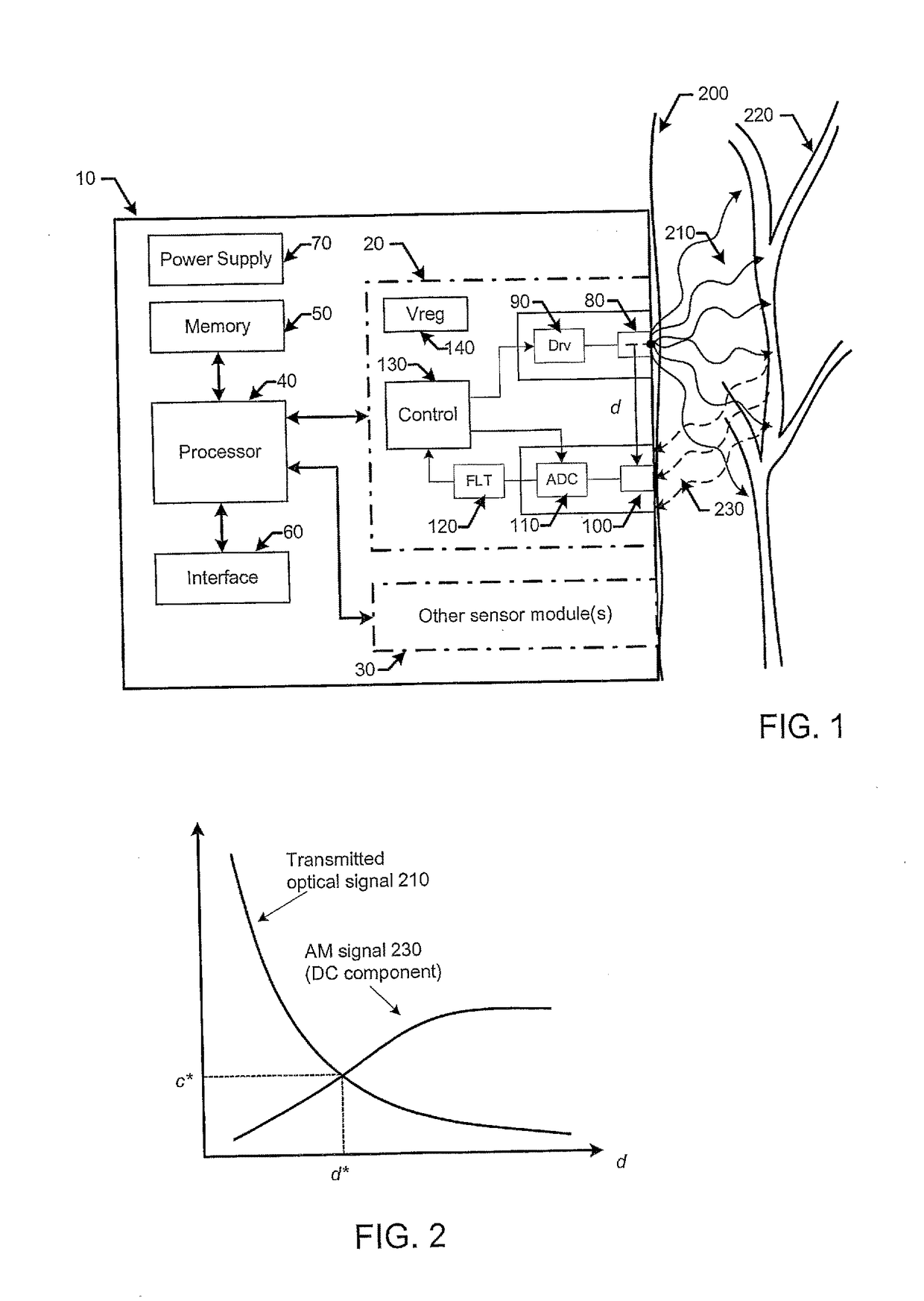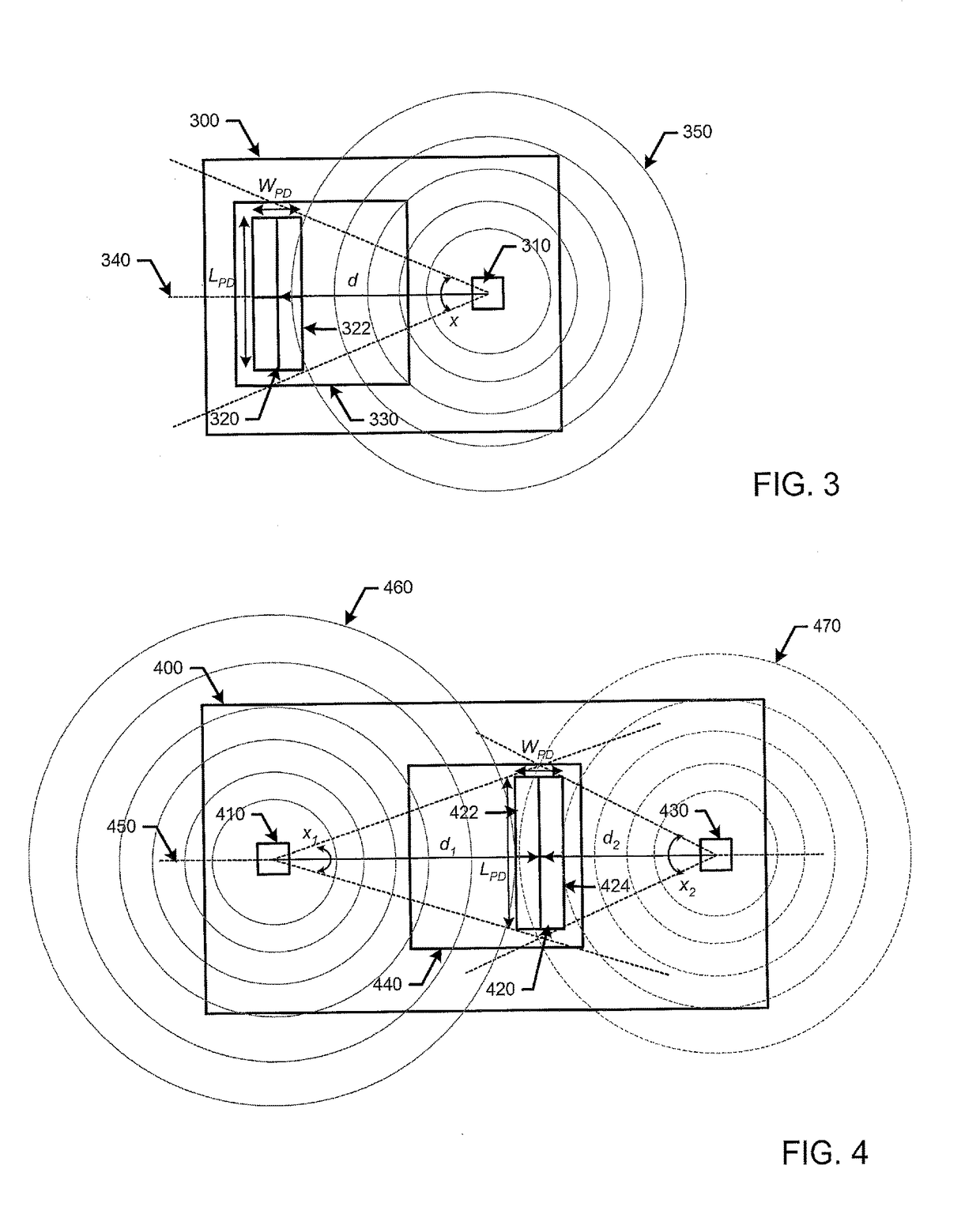Optical Arrangement For Power-Efficient, Low Noise Photoplethysmographic Sensor Module
a sensor module and low noise technology, applied in the field of biometric monitoring devices, can solve the problems of inconvenient or uncomfortable wearing of chest straps, unique problems in rate measurement solutions, and limited heart rate measuremen
- Summary
- Abstract
- Description
- Claims
- Application Information
AI Technical Summary
Benefits of technology
Problems solved by technology
Method used
Image
Examples
Embodiment Construction
[0029]The present disclosure is directed to biometric monitoring devices, which are typically (although not exclusively) designed to be worn by a user continuously, intermittently or during certain activities (e.g., while exercising). Wearable biometric monitoring devices are usually small in size, so as to be relatively unobtrusive for the wearer, and are typically designed to be worn for long periods of time without discomfort. These devices may be worn on a variety of different body parts including, for example, a user's wrist, arm, ankle, leg or chest, without interfering with the user's range of motion or daily activities. As such, a wearable biometric monitoring device may be provided in a variety of form factors including various configurations of bands or straps, which are sized to accommodate a user's wrist, arm, ankle, leg or chest, and configured to compress the device against the user's skin. Alternatively, a wearable biometric monitoring device may be attached to a user...
PUM
 Login to View More
Login to View More Abstract
Description
Claims
Application Information
 Login to View More
Login to View More - R&D
- Intellectual Property
- Life Sciences
- Materials
- Tech Scout
- Unparalleled Data Quality
- Higher Quality Content
- 60% Fewer Hallucinations
Browse by: Latest US Patents, China's latest patents, Technical Efficacy Thesaurus, Application Domain, Technology Topic, Popular Technical Reports.
© 2025 PatSnap. All rights reserved.Legal|Privacy policy|Modern Slavery Act Transparency Statement|Sitemap|About US| Contact US: help@patsnap.com



